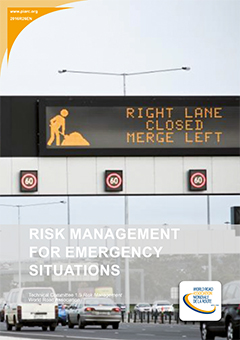Risk Management for Emergency Situations

Road transport is critical to the economic vitality of a country. An effective management of emergency situations for combined and large hazards that may disrupt road operation requires cooperation and coordination among several parties of the road and non-road sector including government agencies, the private sector, rescue services and road users.
Preparedness, response and recovery constitute the three major phases of emergency situation planning and action. Consultation and appropriate communication with road stakeholders before, during and after the occurrence of an emergency situation are keys to ensure that planning and action take into consideration concerns, and experiences from all parties.
Advances in technology and progressive integration of Intelligent Transportation Systems (ITS) in road operation and surveillance have radically changed traditional approaches in preparing for, responding to and recovering from an emergency. Benefits from the use of ITS systems in risk and emergency management clearly demonstrate the need to integrate practices from transportation management and emergency operations. This ensures an integrated approach is taken to improve situational awareness and provide informed decision-making.
In this report, an effort was made to analyze world practices in emergency situation management and present integrated frameworks for risk and business continuity planning. This has produced recommendations for best practice in managing risk and emergency situations both generally and across the road network in particular.
Information sheet
- Date: 2016
- Author(s): Comité technique 1.5 Gestion des Risques Technical Committee 1.5 Risk Management
- Domain(s): Risk Management
- Type: 2016R26EN - Technical Report
- PIARC Ref.: 2016R26EN
- ISBN: 978-2-84060-424-2
- Number of pages: 77